All Skoda models are now based on one of the sub-versions of the MQB modular system, the modular cross-engine cabinet, since the Fabia model change. The Karoq is based on the MQB A1, with the Seat Ateca and Volkswagen T-Roc being two closest relatives within the group. The primary objective of the further development of the Skoda Karoq is to reduce consumption and emissions, largely by reducing air resistance.
For aerodynamic reasons, the hull is now completely covered. Longer in the rear spoiler, small spoilers on the edges of the rear windshield connect the airflow and new aerodynamic tires with spoiler inserts. The plastic pads do blow off, but it’s worth using because the wheels alone are responsible for about a quarter of a car’s air resistance. Perhaps not because of the surface coming from them on the front surface, but because of the vortices caused by the wheels.
The air curtain has changed. Air passing through the fenders reduces circulation behind the front wheels and to the side of the vehicle
The air curtain has also been changed. With the help of air passing through the gaps on the fender edges, the goal is to divert air flows around the bumper more efficiently, reducing air circulation behind the front wheels and to the side of the vehicle. On the 1.0 TSI engine, the electric shutter can close some of the cooling vents if the car does not need full cooling capacity. The tank of 4×4 models is also covered.
Together, these modifications reduced the vehicle’s air resistance by more than 9 percent. The form factor has been improved as well, and the lowest value is now 0.301, which is very good in this class. The low-clearance eco-design in the Seat Ateca had a factor of 0.30 for the new Nissan Qashqai.
Since the value communicated is the best model data, are you concerned about how bad it is compared to the others? Although the bottom case is slightly different with each engine, Radek Havelick, Skoda’s Integrated Product Line Development Manager, reassured that the difference was measured not in centuries but in the thousands.
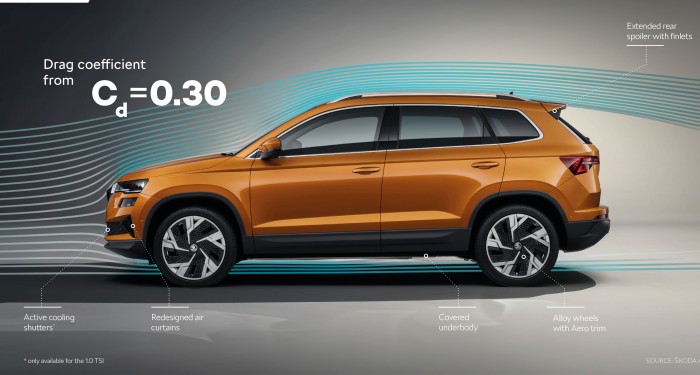
0.301 form factor 1.0 TSI with shutter radiator controlled, Diesel Sportline 4×4 increases to 0.37
At the same time, the 4×4 rises to 0.37 in diesels equipped with Sportline. The Yeti’s minimal form factor was 0.37, and the green line was only after the model update was 0.355 with the bottom cap and 25 mm implant.
New oil in the hydraulic clutch of 4×4 cars somewhat reduces fuel consumption. Brake mods also affect consumption and therefore pollution by reducing friction. With the new solution, brake discs and brake pads fit less tightly and wheels can rotate more easily.
With its revamp, the Karoq is also switching over to the Evo engine generation. Diesel engines will remain after the upgrade, representing 35 percent of the 566,000 cars produced to date. The DSG accounts for 65 percent of transmissions, so all-wheel drive versions can only be paired with the seven-speed dual-clutch automatic.
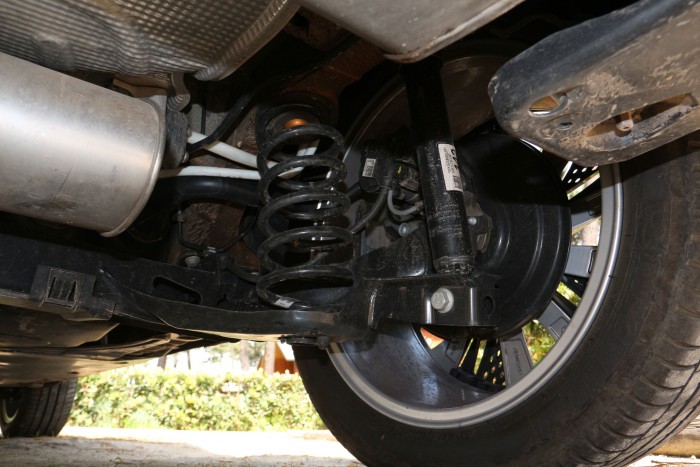
The Karoq gets two types of rear suspension, the simpler and lighter articulated linkage from the 1.5 TSI front-wheel drive. A photo of the four-link independent suspension of the 4×4 diesel engine can be found in the photo gallery
All engines have two camshafts and four valves per cylinder. Gasoline uses plasma-coated cylinder liners and a crankcase to reduce friction and, therefore, fuel consumption. Unfortunately, there were no specialists on site for this particular topic, so no one could know if a gasoline turbocharger had a variable blade geometry.
110 horsepower is three-cylinder, 999 cc petrol, 1.5 TSI – 150 hp. The 190 hp 2.0 TSI engine is only available in Sportline versions. There are 116 or 150 horsepower diesel each With double doses of AdBlue Works. Since the maximum torque of the seven-speed dry-clutch transmission is 250 Nm, the 116-horsepower diesel engine generates 300 Nm with a manual transmission and only 250 Nm with an automatic transmission.
There’s no 12- or 48-volt plug-in hybrid for either engine, and you can’t get a battery-powered hybrid from the Karoq, although the Volkswagen Group has it all on the shelf. According to Škoda, it was not feasible to include these improvements in the remaining model cycle, as they are in high demand in the Octavia and Superb in their customer base.
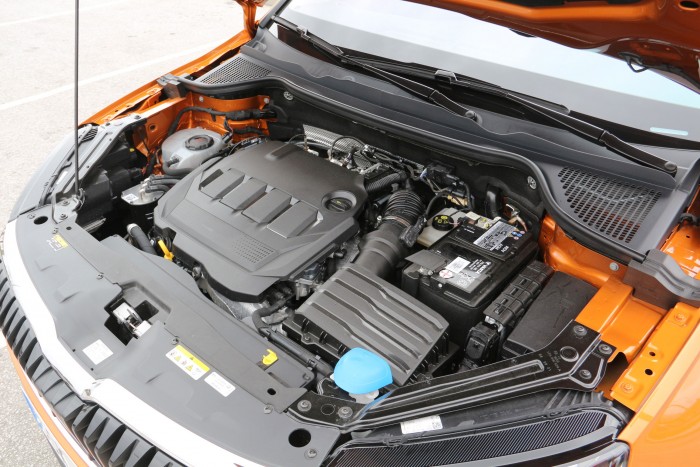
The gas telescope does not help lift the hood. All engines have twin camshafts and four valves per cylinder. The straight cover no longer reveals what’s underneath
Wheel size is between 16 and 19 inches, the smallest size includes a forged steel rim and alloy wheels, the largest of which is only the last. A bottom guard can still be ordered for HUF 71,120, but it doesn’t have the increased clearance against bad road groups, but it does consist of a lower bonnet and provides enhanced protection on the lower rear swingarms, parking brake cable and brake hoses.
I didn’t find it among the add-ons, but according to a factory press release, adaptive damping is available in Ambition, Style and Sportline versions. This is a very important component because it makes the car more comfortable and inexpensive for other models than you can add to the value in using the Skoda Karoq. Dynamic Drive Control (DCC) is complemented by variable-speed steering, which makes steering more direct and requires less steering on the steering wheel when parked.
Torque in 2.0 TDIs depends on shifting. Maximum power of 116 hp is reduced by 50 Nm using a DSG dry clutch, while the 150 hp oil-cooled, dual-clutch version will be larger than a manual transmission. A valuable development is the matrix LED headlight, which blocks vehicles ahead or in front by dynamically deactivating and activating certain LED high beam headlights.
There is signage detection from the driver assistance system, and sensors with a range of 70 meters that scan the vicinity of and behind the vehicle. The lane carrier is now said to be able to interpret temporarily deposited lane breaks for road construction, and the predictive cruise control system automatically reduces speed when approaching a roundabout if desired.
DSG cars are able to stop on their own, lock the car and turn on the hazard warning lights if the driver is ill, this does not work with a manual transmission because there is no one to shift the transmission to neutral. When parking, the car brakes for us if we hit something in front or behind it. Reversing the steering assist helps maneuver when we are pulling something, it shows where and how much to turn the steering wheel.
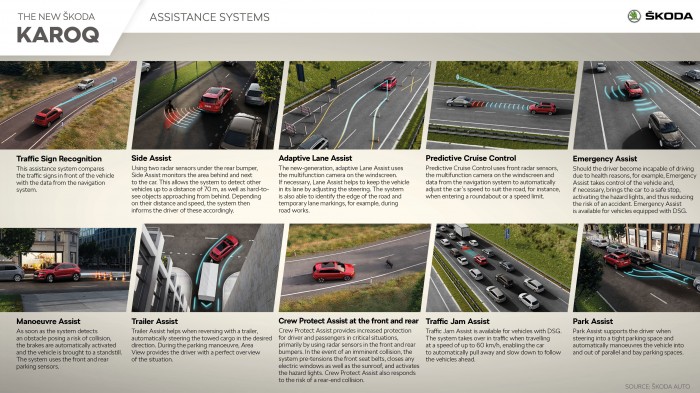
With the modernization of the model, driver support systems have also evolved. The adaptive cruise control worked convincingly
Before emergency braking, the car closes the power windows and sunroof and tightens the belts. Congestion Assist can travel with traffic at speeds up to 60 km/h, stopping and starting a line. The car also helps with parking, since it can be parked parallel to the sidewalk and at 90 degrees, if necessary, and outside the parking spaces.

“Social media evangelist. Baconaholic. Devoted reader. Twitter scholar. Avid coffee trailblazer.”





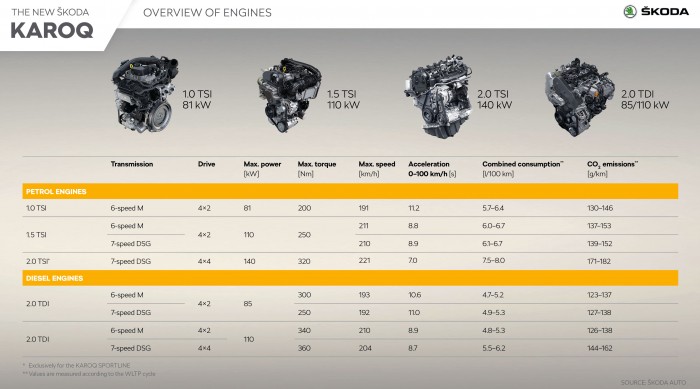



More Stories
Despite economic hardships, 85% of companies are increasing their investment in cloud solutions
Viktor Orban plans to lead Hungary until 2040 – everything in one place about PM’s speech in Tosvany
Companies have to do a lot of work if they don’t want to cook their employees